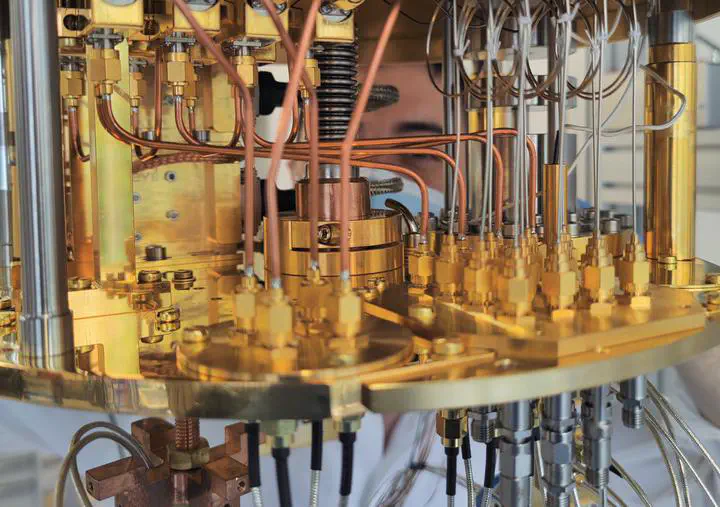Apodization of coupled cavity array for waveguide QED
 Blue Force diluition refrigerator.
Blue Force diluition refrigerator.In the present work we aim to optimize the design of a coupled resonator waveguide QED (Quantum Electrodynamics) to obtain flat transmission on a defined frequency range through apodization of the transmission peaks. In order to reach apodization, we slightly modify the physical parameters of the resonators at both ends of the waveguide device so that the reflections cancel out the Fabry–Perot resonances at the resonant frequencies. This leads to a broadening of the characteristic peaks usually observed in transmission for coupled cavity arrays. Under optimal conditions, we can exploit these broadenings to obtain flat transmission on a frequency band whose width depends on the number of resonators in the waveguide and on their coupling strength.
Apodized coupled resonator waveguides have been used for filtering applications as they operate as band-pass filters. However, in recent years these devices have captivated more interest because of their possible use in slow light applications. Slow light devices are based on the idea that the dispersion relation in periodic structures flattens at the transmission band edges. Since the group velocity is defined by the derivative of the dispersion relation, it is therefore small in regions where the dispersion relation goes flat, meaning that around the transmission band edges we can achieve both large transmission and low group velocity. These devices can be used to study non-Markovian dynamics, i.e. dynamics of physical systems with memory of the past interactions.
Read the full project report here.